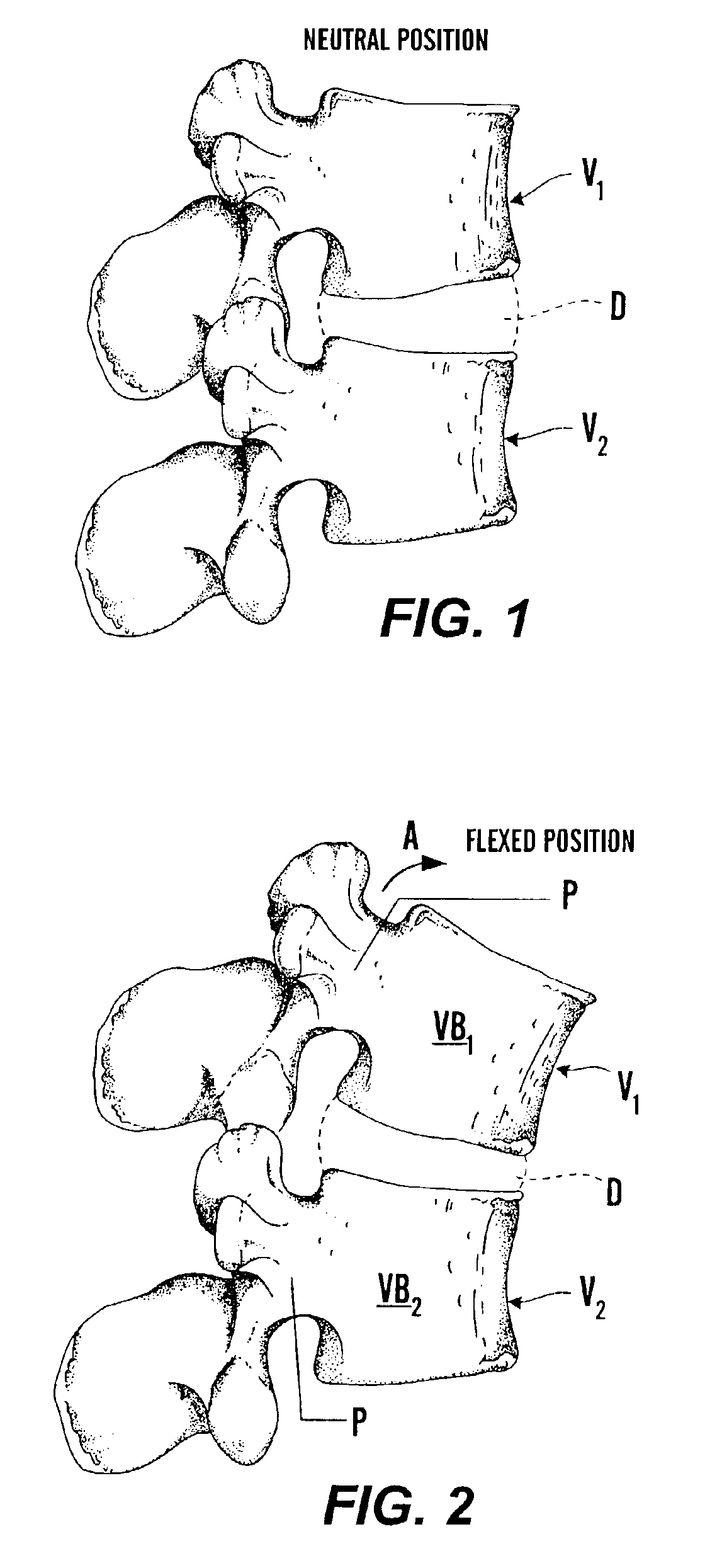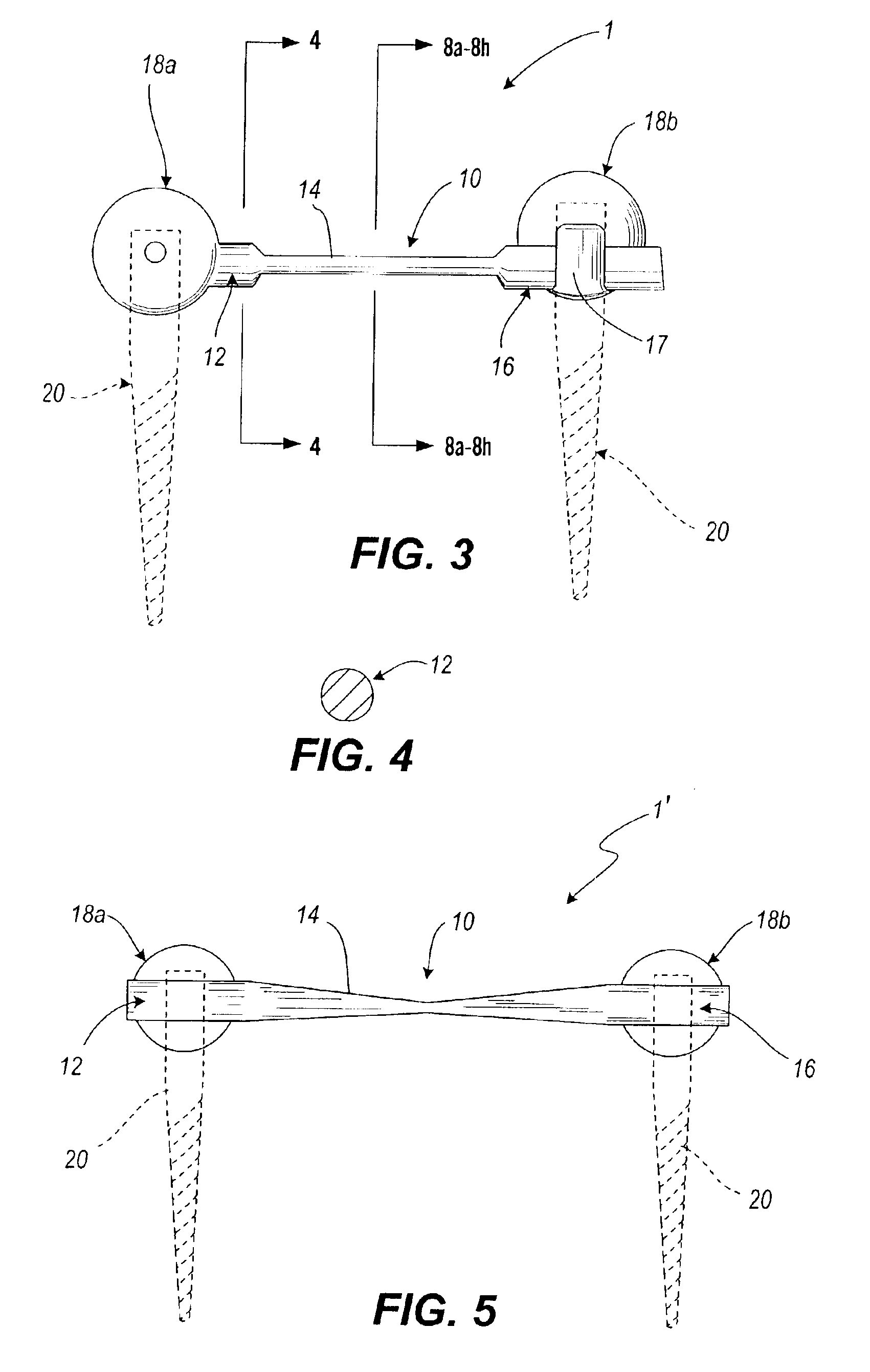Dynamic fixation device and method of use
a technology of dynamic fixation and rod, which is applied in the field of flexible rod or device, can solve the problems of pain and neurologic compromise in some patients, local breakdown and excessive wear, and local instability, and achieve the effects of simple flexion, less stress failure, and more translation
- Summary
- Abstract
- Description
- Claims
- Application Information
AI Technical Summary
Benefits of technology
Problems solved by technology
Method used
Image
Examples
Embodiment Construction
[0042]While the present invention will be described more fully hereinafter with reference to the accompanying drawings, in which particular embodiments and methods of implantation are shown, it is to be understood at the outset that persons skilled in the art may modify the invention herein described while achieving the functions and results of this invention. Accordingly, the descriptions which follow are to be understood as illustrative and exemplary of specific structures, aspects and features within the broad scope of the present invention and not as limiting of such broad scope.
[0043]As noted above, at each intervertebral joint or disc D, flexion involves a combination of anterior sagittal rotation and a small amplitude anterior translation. The various embodiments of the present invention allow for controlled rotation while limiting translation within an acceptable, normal physiological range.
[0044]Referring now to FIG. 3, a first embodiment of a dynamic fixation system 1 is i...
PUM
 Login to View More
Login to View More Abstract
Description
Claims
Application Information
 Login to View More
Login to View More - R&D
- Intellectual Property
- Life Sciences
- Materials
- Tech Scout
- Unparalleled Data Quality
- Higher Quality Content
- 60% Fewer Hallucinations
Browse by: Latest US Patents, China's latest patents, Technical Efficacy Thesaurus, Application Domain, Technology Topic, Popular Technical Reports.
© 2025 PatSnap. All rights reserved.Legal|Privacy policy|Modern Slavery Act Transparency Statement|Sitemap|About US| Contact US: help@patsnap.com



